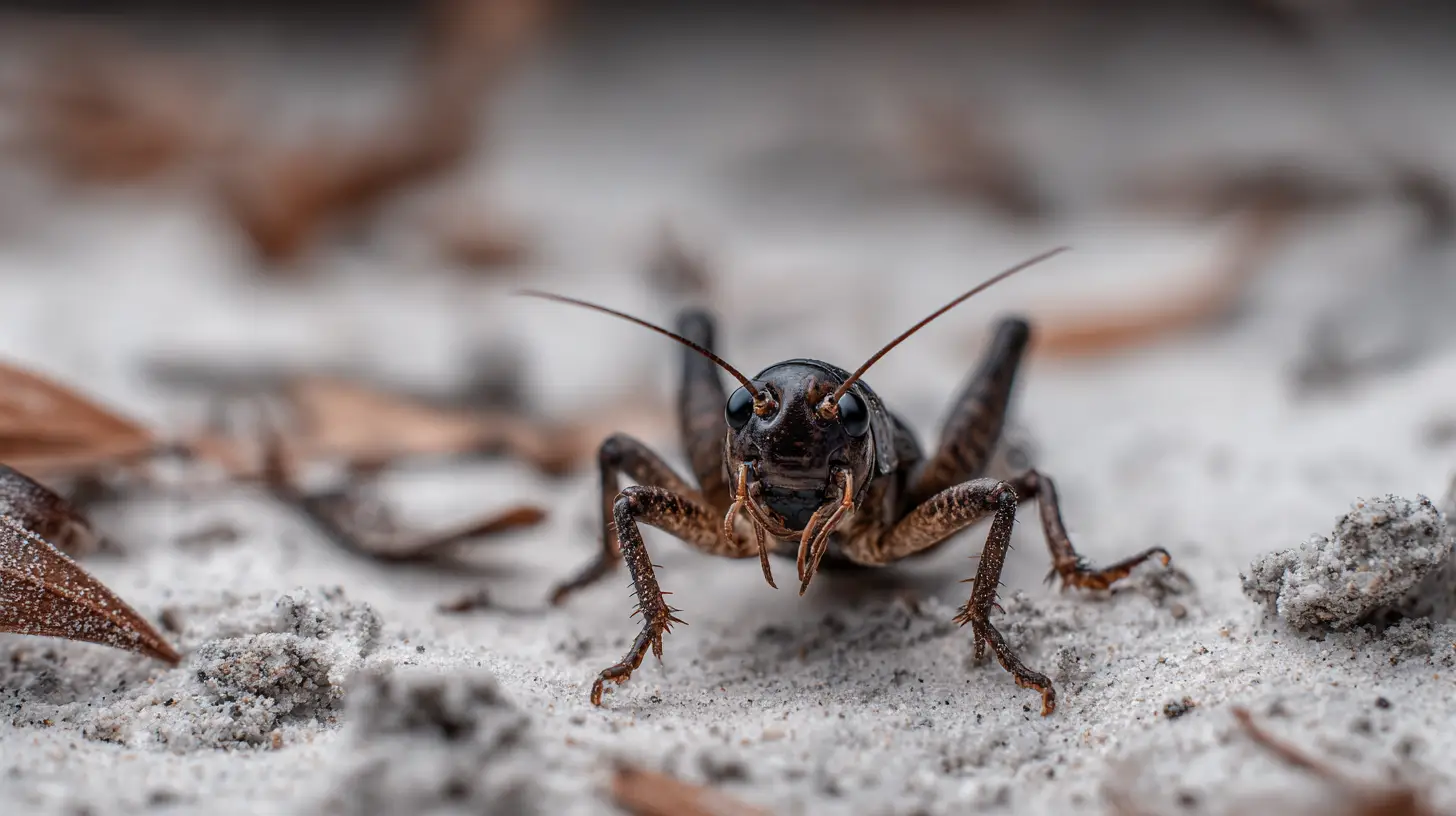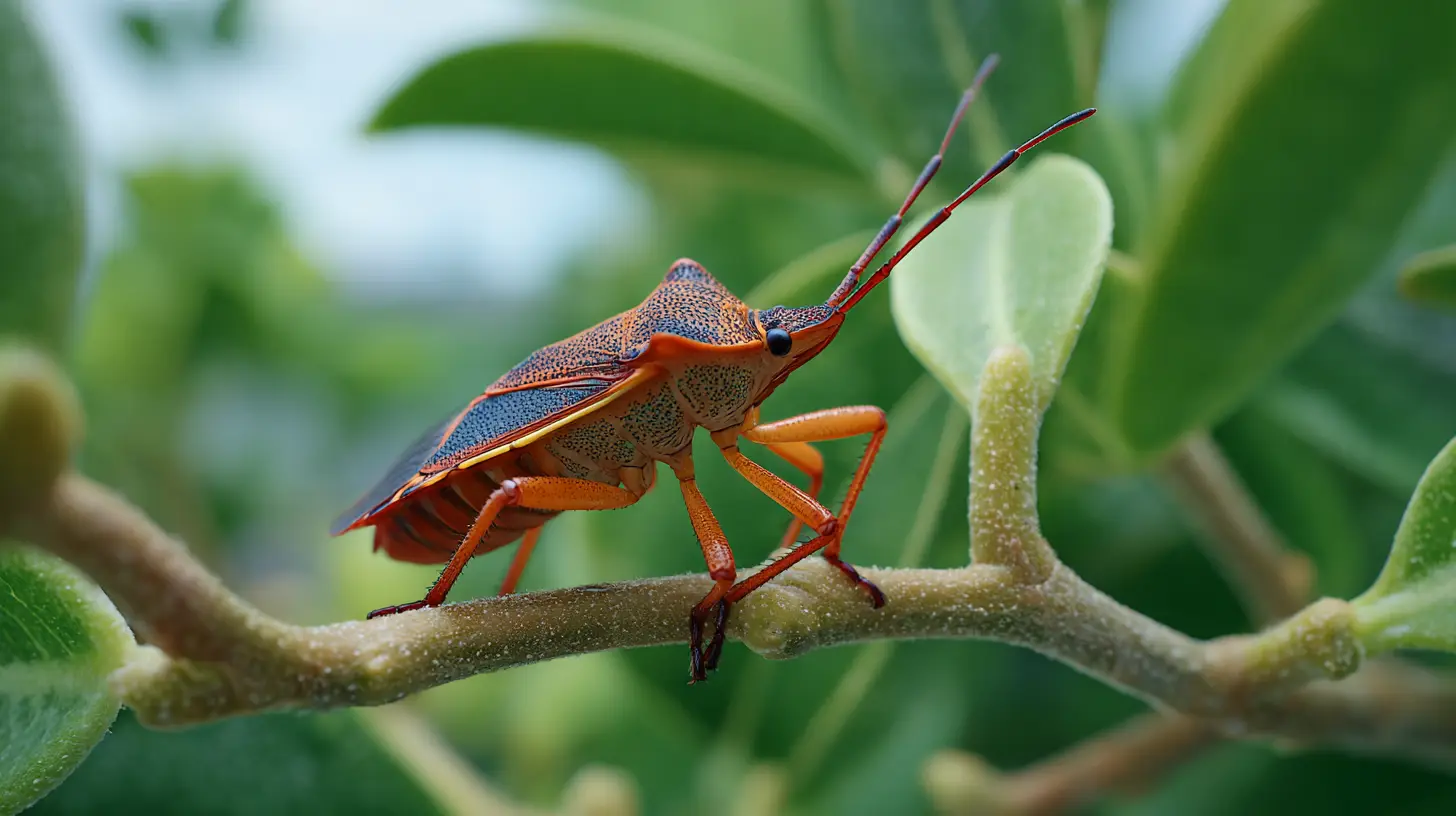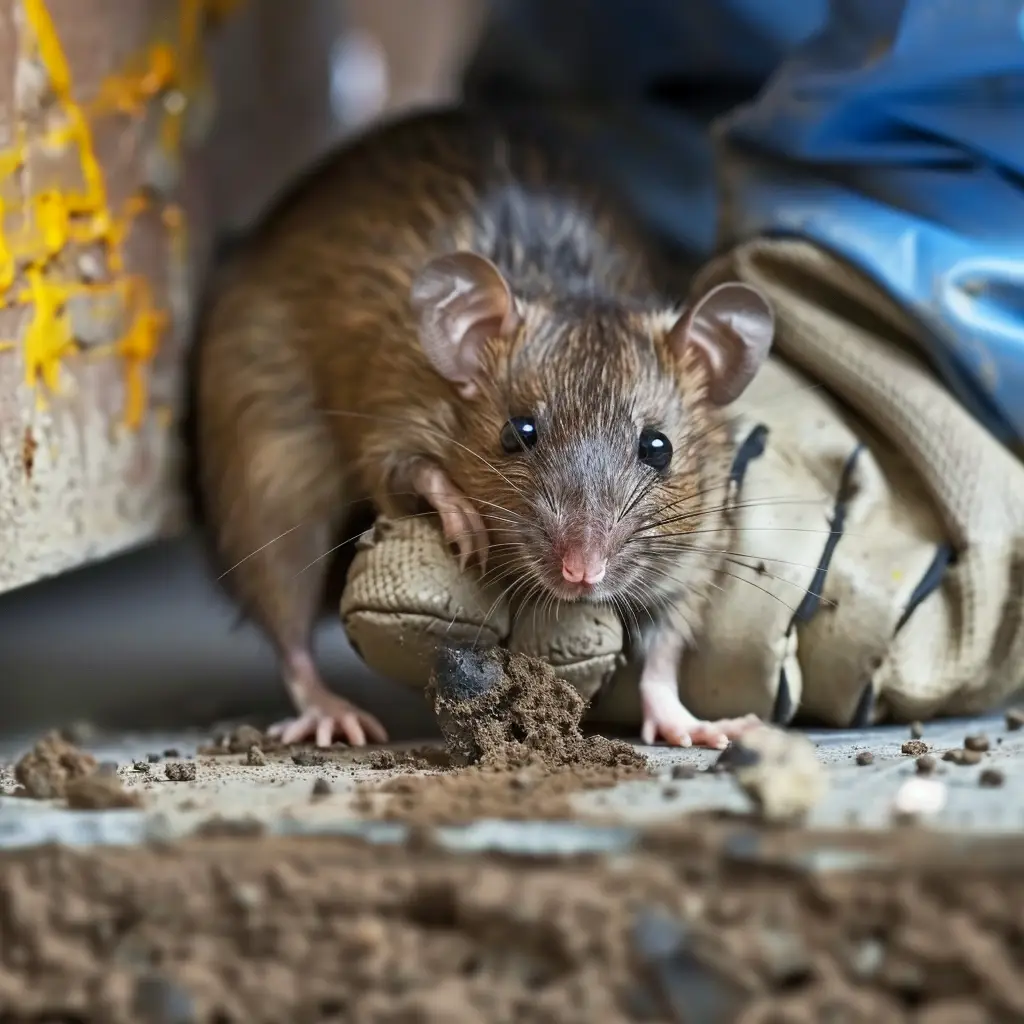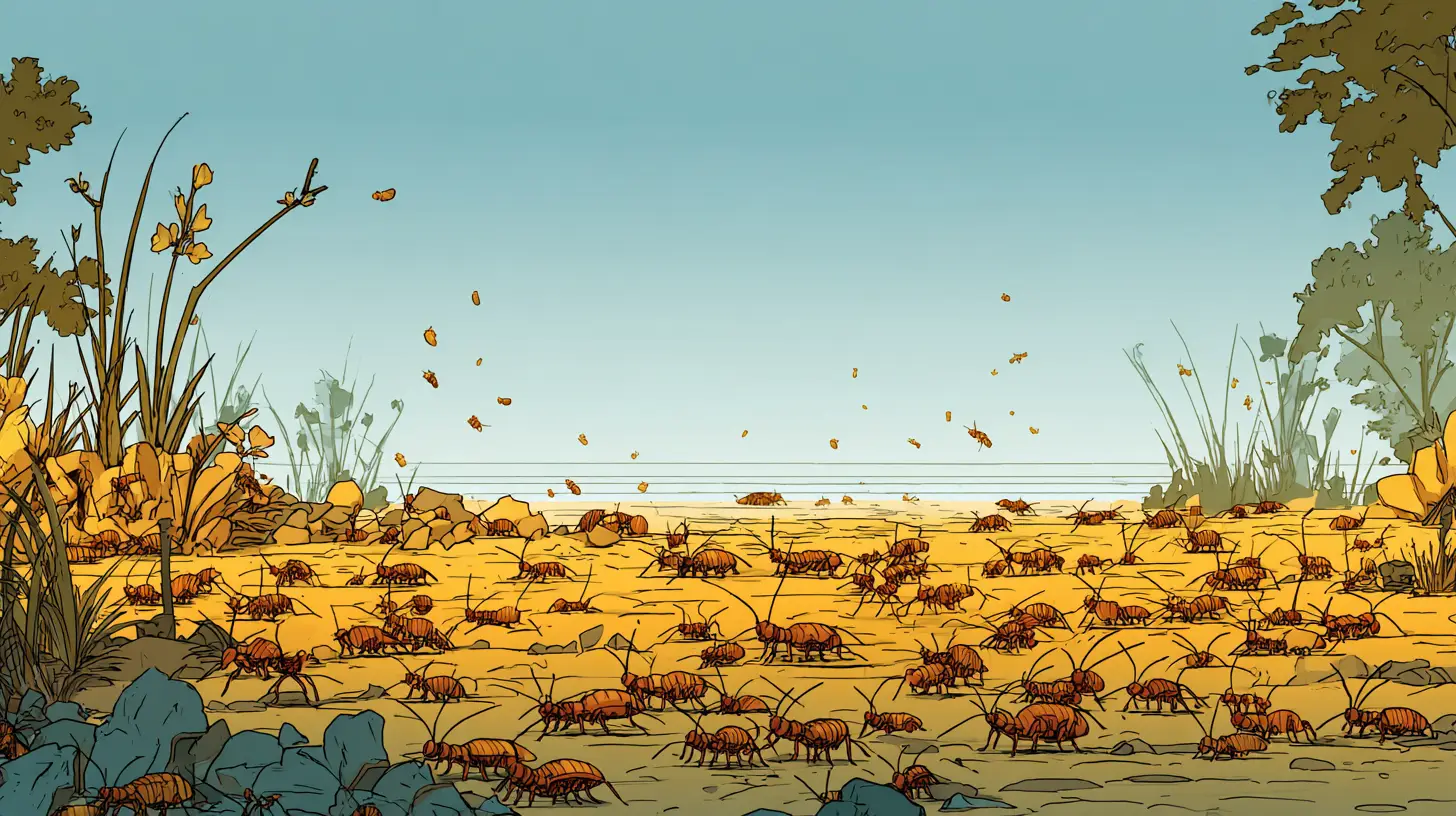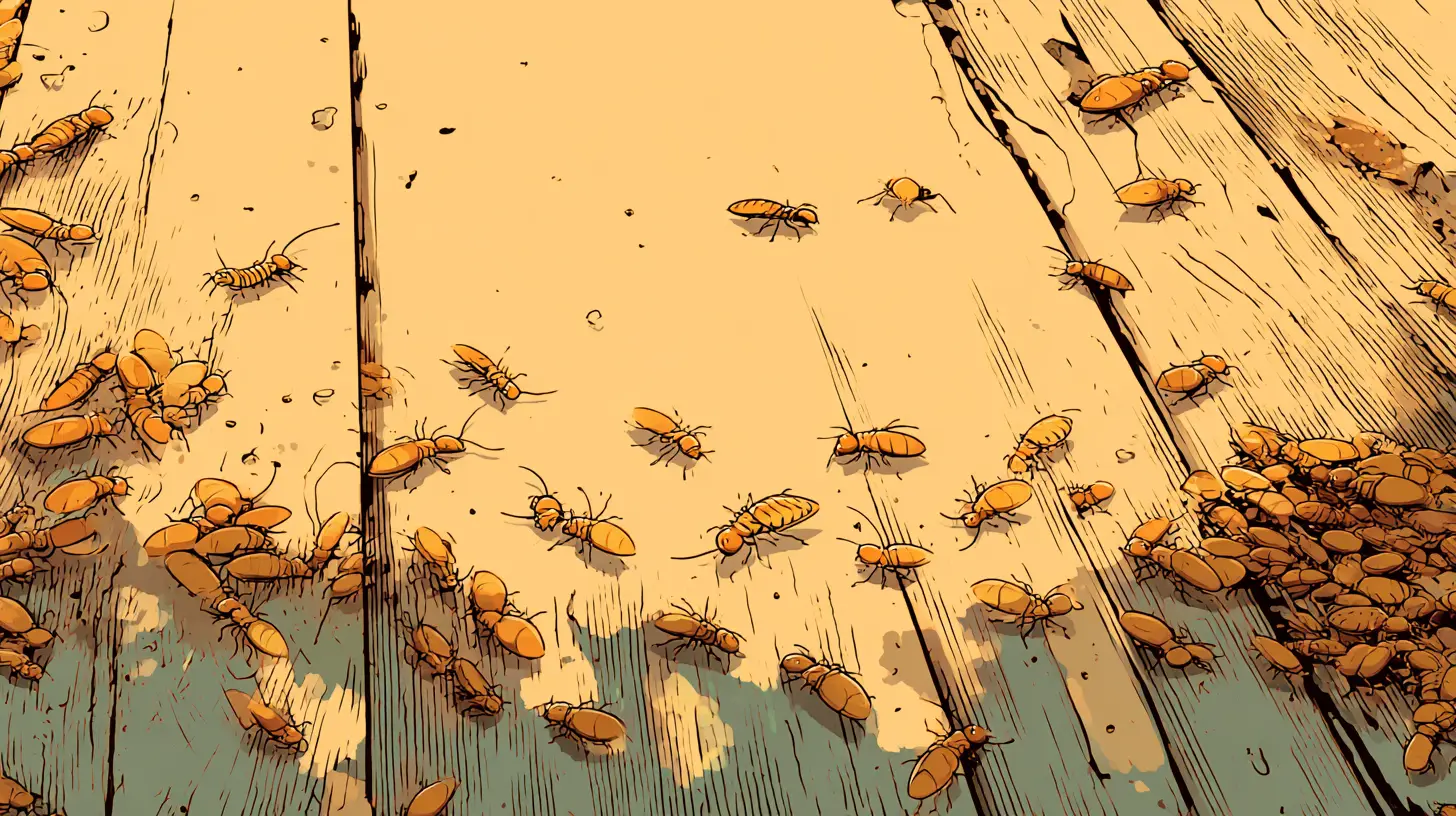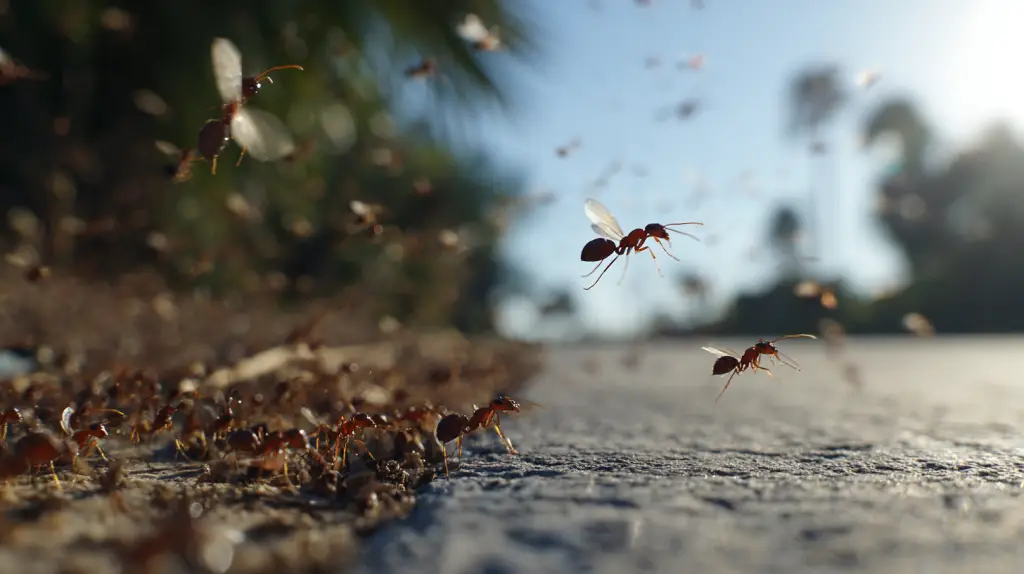
Table of Contents
If you’ve lived in Bradenton for more than a year, you’ve probably experienced the annual phenomenon of what looks like a biblical plague of flying ants suddenly appearing around your home. One day everything’s normal, and the next day you’re dealing with winged insects swarming around your lights, crawling out of cracks, or forming black clouds in your yard.
Welcome to reproductive ant season – one of Southwest Florida’s most misunderstood natural events. These aren’t mutant ants that suddenly sprouted wings, and they’re not necessarily a sign that you have a major pest problem (though they can be). They’re actually a normal part of the ant life cycle that becomes particularly noticeable in Bradenton’s warm, humid climate.
But here’s what every Bradenton homeowner needs to know: while flying ant swarms are natural, they can also signal serious problems like carpenter ant infestations that damage your home’s structure, or they might be termites that you’re mistaking for ants. Learning to identify what you’re dealing with can save you thousands of dollars in home repairs.
Let’s break down everything you need to know about flying ants in Bradenton – when they appear, which species you’re likely encountering, how to tell them apart from termites, and when these seasonal swarms indicate a problem that needs immediate attention.
Key Takeaways
- Peak season runs May through August with highest activity typically in June and July, though our mild climate can extend this period.
- Species identification matters because carpenter ants require immediate attention while fire ant swarms are typically just seasonal annoyances.
- Indoor vs. outdoor makes a big difference in determining whether flying ant activity indicates a problem requiring professional intervention.
- Don’t confuse flying ants with termites – proper identification is crucial for appropriate response and can save thousands in unnecessary treatments.
- Bradenton’s Gulf Coast climate creates ideal conditions for year-round ant activity, making professional monitoring more valuable than in cooler climates.
- Storm and moisture correlations can help predict when flying ant activity might increase and when it might indicate new problems.
The goal is living comfortably with Bradenton’s natural ant populations while protecting your home from the species that can cause real damage.
What Are Flying Ants and Why Do They Invade Bradenton Every Summer?
Flying ants aren’t a separate species – they’re reproductive members of existing ant colonies called “alates.” Think of them as the ant equivalent of teenagers leaving home to start their own families.
During certain times of the year, established ant colonies produce winged reproductive ants whose job is to fly away, mate, and establish new colonies. After mating, the males die, and the fertilized females (future queens) shed their wings and look for places to start new nests.
Why Bradenton gets hit particularly hard:
- Year-round warmth: Our temperatures rarely drop below the threshold where ant activity slows down, meaning colonies stay active and productive longer than in cooler climates.
- High humidity: Bradenton’s Gulf Coast location provides the moisture that most ant species need to thrive, supporting larger, more active colonies.
- Abundant food sources: Our lush landscaping, outdoor dining culture, and proximity to water provide ideal conditions for diverse ant populations.
- Urban-natural interface: Bradenton’s mix of developed areas and natural spaces creates perfect corridors for ant colony expansion.
This combination of factors means that when reproductive season hits, we see massive numbers of flying ants that can be overwhelming for homeowners who aren’t expecting them.
The Bradenton Flying Ant Calendar: When to Expect Swarms
In Bradenton, flying ant season typically runs from May through August, with peak activity usually occurring in June and July. However, our mild winters mean you might occasionally see smaller swarms outside this window.
Timing factors that affect swarms in Bradenton:
- Weather patterns: Flying ants often emerge after warm, humid days followed by rain – perfect conditions for mating flights and new colony establishment.
- Temperature thresholds: Most species begin reproductive flights when temperatures consistently stay above 70°F with high humidity.
- Storm activity: The period before and after summer thunderstorms often triggers major swarms, as atmospheric pressure changes signal optimal conditions.
- Seasonal overlap: Unlike northern climates where there’s a clear “ant season,” Bradenton’s year-round warmth means some overlap with other pest reproductive cycles.
- Local microclimates: Areas near the Manatee River, Anna Maria Island, or other water sources may see earlier or more intense swarms due to increased moisture.
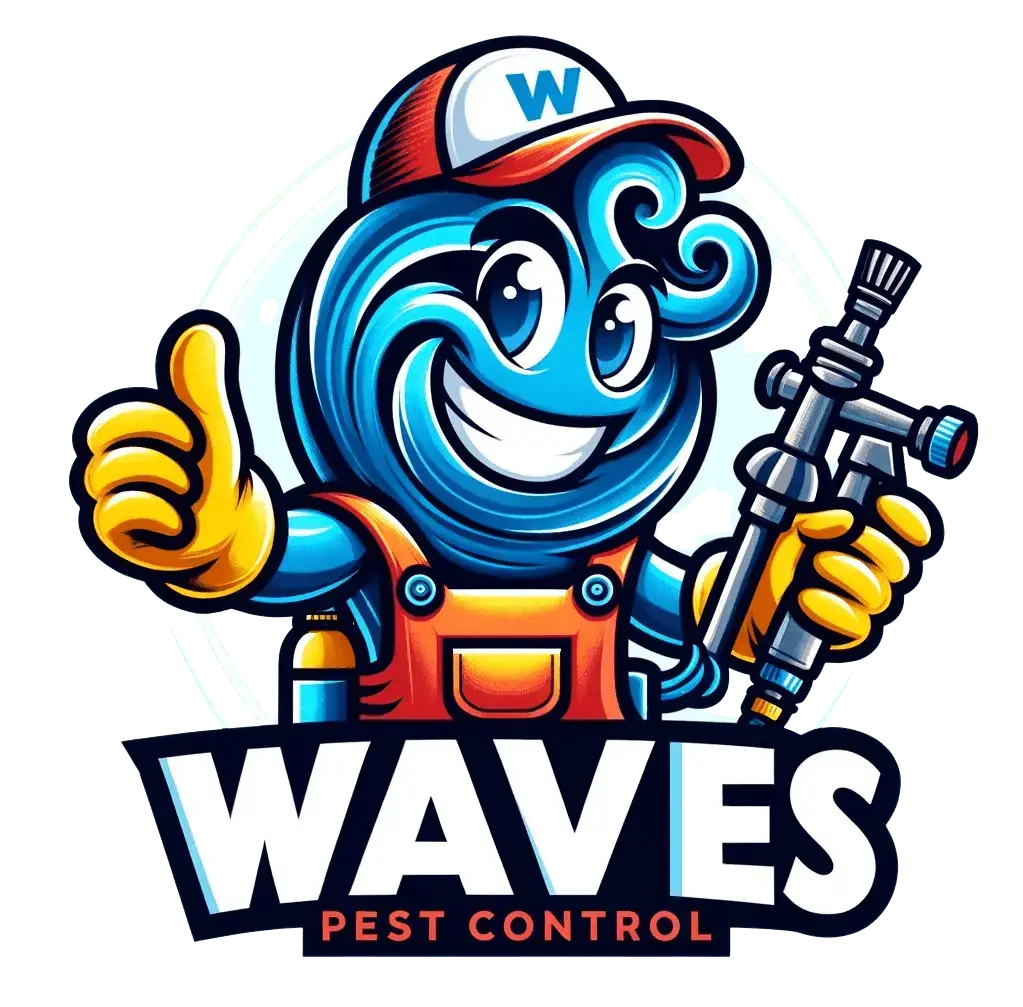
Get Pest-Free Today!
Trust Waves Pest Control for expert pest control in Bradenton, FL. Call now or request your free quote online!
Request a QuoteCommon Flying Ant Species You’ll Encounter in Bradenton
Carpenter Ants: The Home Destroyers
- What they look like: Large ants (up to 11mm) with dark brown to black coloring. Flying reproductives are even larger and have four wings.
- Why they matter in Bradenton: These are the flying ants that should concern you most. Carpenter ants don’t eat wood, but they excavate it to create nests, potentially causing serious structural damage to homes.
- Where they nest: Prefer moist, decaying wood – common in Bradenton homes due to our humidity and occasional storm damage. Look for them near:
- Window frames and door frames
- Roof areas with moisture problems
- Decks and outdoor structures
- Areas around plumbing leaks
- Signs of problems: If you see carpenter ant swarms indoors, especially emerging from walls or ceilings, you likely have an established colony inside your home that needs immediate professional attention.
Fire Ants: The Outdoor Menace
- What they look like: Small to medium-sized ants (2-6mm) ranging from reddish-brown to black. Flying reproductives have four wings and are slightly larger than workers.
- Why they matter in Bradenton: Fire ants are primarily an outdoor problem, but their reproductive swarms can be massive and their stings are painful and potentially dangerous for people with allergies.
Where they nest: Prefer open, sunny areas with moist soil:
- Lawns and gardens
- Parks and recreational areas
- Areas near irrigation systems
- Disturbed soil around construction
- Swarm behavior: Fire ant reproductive flights often create huge clouds of flying ants that can be alarming but typically don’t indicate indoor infestations.
Rover Ants: The Drought Invaders
- What they look like: Very small ants (1-3mm) with dark brown coloring. Flying reproductives are only slightly larger than workers.
- Why they matter in Bradenton: Rover ants become indoor problems during dry periods when they seek moisture sources inside homes.
Where they nest: Originally outdoor in moist areas, but they move indoors during drought conditions:
- Near water sources (kitchens, bathrooms)
- Around pet food and water bowls
- In potted plants
- Under appliances that produce moisture
- Seasonal patterns: You might see rover ant swarms both during normal reproductive season and during particularly dry periods when they’re seeking new moisture sources.
Ghost Ants: The Indoor Specialists
- What they look like: Tiny ants (1-2mm) with dark heads and pale, almost transparent abdomens. Flying reproductives are rare and small.
- Why they matter in Bradenton: These ants are adapted to indoor living and can establish colonies entirely within homes.
Where they nest: Prefer warm, humid indoor environments:
- Wall voids near kitchens and bathrooms
- Behind appliances
- In potted plants
- Around plumbing fixtures
- Reproductive behavior: Ghost ants can reproduce indoors year-round in Bradenton’s climate, making them a persistent indoor pest.
Flying Ants vs. Termites: Critical Identification for Bradenton Homeowners
This is where many Bradenton homeowners make expensive mistakes. Both flying ants and termite swarmers appear during overlapping seasons, and both can indicate serious problems – but they require completely different treatments.
Flying Ant Characteristics:
- Waist: Narrow, pinched waist (like a fashion model)
- Antennae: Elbowed, bent antennae
- Wings: Four wings with front wings longer than back wings
- Body shape: Three distinct body segments (head, thorax, abdomen)
- Wing attachment: Wings easily detach and may be found scattered around
Termite Swarmer Characteristics:
- Waist: Uniform width from head to tail (like a tube)
- Antennae: Straight antennae that may be beaded
- Wings: Four wings of equal length
- Body shape: More uniform, less segmented appearance
- Wing attachment: Wings are more securely attached
Critical differences for Bradenton identification:
- Timing overlap: In Bradenton, termite swarmers (particularly Eastern subterranean termites) can appear from December through early summer, overlapping with ant reproductive season.
- Indoor vs. outdoor: Termite swarmers indoors almost always indicate an active termite infestation requiring immediate professional treatment. Flying ants indoors might indicate various levels of problems depending on species.
- Behavior after swarming: Flying ants are often seen walking around after landing and losing wings. Termite swarmers typically disappear quickly after swarming, leaving only scattered wings behind.
What Flying Ant Swarms Tell You About Your Property
When Flying Ants Are Normal (But Still Annoying)
- Outdoor swarms during peak season: Large swarms of fire ants or other species in your yard during May-August are typically normal reproductive behavior and don’t necessarily indicate problems with your home.
- Attracted to lights: Flying ants swarming around outdoor lights or windows are usually just following their natural attraction to light sources during mating flights.
- Short-duration events: Swarms that last a few hours to a couple of days and then disappear are typically normal reproductive flights.
- Species-appropriate locations: Fire ant swarms in lawn areas, rover ant swarms near outdoor moisture sources, etc.
When Flying Ants Signal Problems
- Indoor carpenter ant swarms: If you see flying carpenter ants emerging from inside your home, especially from walls, ceilings, or structural areas, you likely have an established colony causing structural damage.
- Repeated swarms in the same location: Multiple swarms emerging from the same area of your property over weeks or months indicate an established colony.
- Structural damage signs: Flying ant swarms combined with visible wood damage, sawdust-like debris, or hollow-sounding wood require immediate inspection.
- Year-round indoor activity: Any flying ants inside during cooler months (rare in Bradenton, but it happens) typically indicate indoor colonies.
Red Flags for Bradenton Homeowners
Swarms from specific home areas:
- Flying ants emerging from baseboards or wall voids
- Swarms coming from attic or crawl space areas
- Flying ants around windows that may indicate moisture problems
- Emergence from areas with known water damage
- Storm damage correlation: Flying ant activity that increases after storms may indicate new access points or moisture problems that are attracting nesting behavior.
- Landscape correlations: Swarms consistently emerging near specific trees, mulched areas, or irrigation systems may indicate large outdoor colonies that could eventually move indoors.
Managing Flying Ant Swarms in Bradenton
Immediate Response to Swarms
- Don’t panic: Most flying ant swarms are temporary and will resolve on their own within hours to days.
- Document what you see: Take photos of the ants, note locations where they’re emerging, and record timing for potential professional consultation.
- Avoid pesticides during swarms: Spraying flying ants is typically ineffective and may scatter them or interfere with professional identification.
- Control access points: Close windows and doors to prevent indoor invasions, but don’t seal potential emergence points until you know what you’re dealing with.
Short-term Management
- Lighting strategies: Turn off outdoor lights or switch to yellow/sodium lights that are less attractive to flying ants.
- Physical barriers: Use fans to create air currents that make flying difficult for ants near outdoor living areas.
- Indoor cleanup: Vacuum up any flying ants that make it indoors, but save some specimens for identification if needed.
- Moisture control: Address any moisture problems around your home that might be attracting nesting behavior.
Long-term Prevention
Landscape management:
- Keep mulch away from home foundations
- Trim vegetation that touches your home
- Address irrigation issues that create consistently moist areas
- Remove dead wood and debris from around your property
Home maintenance:
- Seal cracks and entry points around foundations
- Fix moisture problems promptly
- Address storm damage quickly
- Maintain proper drainage around your home
- Professional monitoring: Consider regular pest control inspections, especially if you’ve had problems with structural ant species like carpenter ants.
When to Call Professionals in Bradenton
Immediate Professional Consultation Needed
- Indoor carpenter ant swarms: Any flying carpenter ants emerging from inside your home require immediate professional assessment for structural damage.
- Termite vs. ant uncertainty: If you can’t definitively identify whether you’re seeing flying ants or termite swarmers, professional identification is crucial.
- Structural damage signs: Any flying ant activity combined with visible wood damage, hollow sounds in structural wood, or sawdust-like debris.
- Repeated indoor invasions: Multiple episodes of indoor flying ant swarms over several weeks or months.
Professional Assessment Recommended
- Large outdoor swarms near structures: Massive swarms consistently emerging near your home’s foundation or structural elements.
- Post-storm increases: Significant increases in flying ant activity after storms that might indicate new nesting opportunities.
- Moisture-related swarms: Flying ant activity that correlates with plumbing leaks, roof problems, or other moisture issues.
- Multiple species identification: When you’re seeing multiple types of flying ants that might indicate different problems requiring different treatments.
Bradenton-Specific Considerations
Gulf Coast Climate Factors
- Year-round activity: Unlike northern climates, ant colonies in Bradenton can remain active throughout the year, potentially producing multiple reproductive flights.
- Hurricane season correlation: Major storms can disrupt established colonies and create new nesting opportunities, potentially changing local ant population dynamics.
- Tourism season impacts: Increased activity during tourist seasons might introduce new ant populations or stress existing ones.
Local Environment Factors
- Coastal moisture: Proximity to the Gulf of Mexico creates consistently high humidity that supports large ant populations.
- Development patterns: Bradenton’s ongoing development creates disturbed soil conditions that some ant species prefer for new colonies.
- Water management: Extensive irrigation systems and water features create ideal conditions for moisture-loving ant species.
- Native vs. introduced species: Bradenton hosts both native ant species and introduced species like fire ants, creating complex population dynamics.
The Bottom Line: Understanding Flying Ants in Bradenton
Flying ant swarms are a normal part of life in Bradenton, but they’re not all created equal. The key is learning to recognize which swarms are natural seasonal events and which ones indicate problems that need immediate attention.
- Most flying ant swarms in Bradenton are normal and temporary. During peak season (May-August), large outdoor swarms are typically reproductive flights that will resolve on their own.
- Indoor flying ants require more attention, especially carpenter ants that can cause structural damage or any species emerging from inside your home.
- Proper identification is crucial because the difference between flying ants and termite swarmers can mean the difference between a minor annoyance and major structural problems.
- Professional help is worth it when you’re uncertain about identification or dealing with indoor swarms that might indicate established colonies.
Understanding these seasonal patterns helps you respond appropriately to flying ant activity while protecting your home from the species that can cause real problems.
Frequently Asked Questions (FAQs)
Are flying ants dangerous or harmful?
Most flying ants are harmless to humans, but carpenter ants can damage your home’s structure, and fire ant swarms can pose stinging risks. The main concern is identifying species that indicate structural problems.
How long do flying ant swarms typically last in Bradenton?
Most swarms last from a few hours to 2-3 days. If you’re seeing repeated swarms from the same location over weeks, it may indicate an established colony that needs attention.
Should I spray flying ants when I see them swarming?
Spraying is typically ineffective during swarms and can scatter ants or make identification harder. It’s better to wait for the swarm to end naturally and then address any underlying colony issues.
How can I tell if flying ants are coming from inside my house?
Look for emergence points – ants coming from cracks, baseboards, or wall areas indicate indoor colonies. Outdoor swarms that just fly near your house are typically different from ants emerging from inside structures.
Is it normal to see flying ants year-round in Bradenton?
Peak season is May-August, but our mild climate can support some ant activity year-round. Year-round indoor flying ant activity is less normal and may indicate indoor colonies.
What’s the difference between flying ants and termite swarmers?
Flying ants have pinched waists and elbowed antennae; termite swarmers have uniform body width and straight antennae. Both have four wings, but ant wings are unequal in length while termite wings are equal.
Should I be worried about flying ants if I don’t see any damage?
Outdoor swarms are typically normal. Indoor swarms, especially carpenter ants, can indicate hidden damage that’s not yet visible. Professional inspection can determine if there are problems you can’t see.
Can flying ants predict bad weather in Bradenton?
Ant swarms often increase before or after storms due to atmospheric pressure changes, but they’re responding to weather rather than predicting it. Post-storm increases might indicate new nesting opportunities from storm damage.

